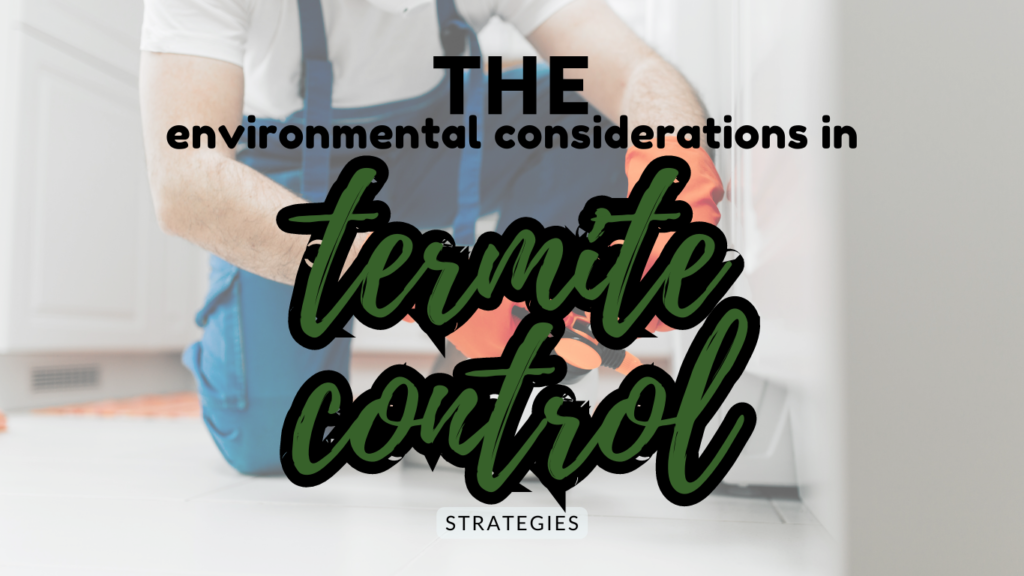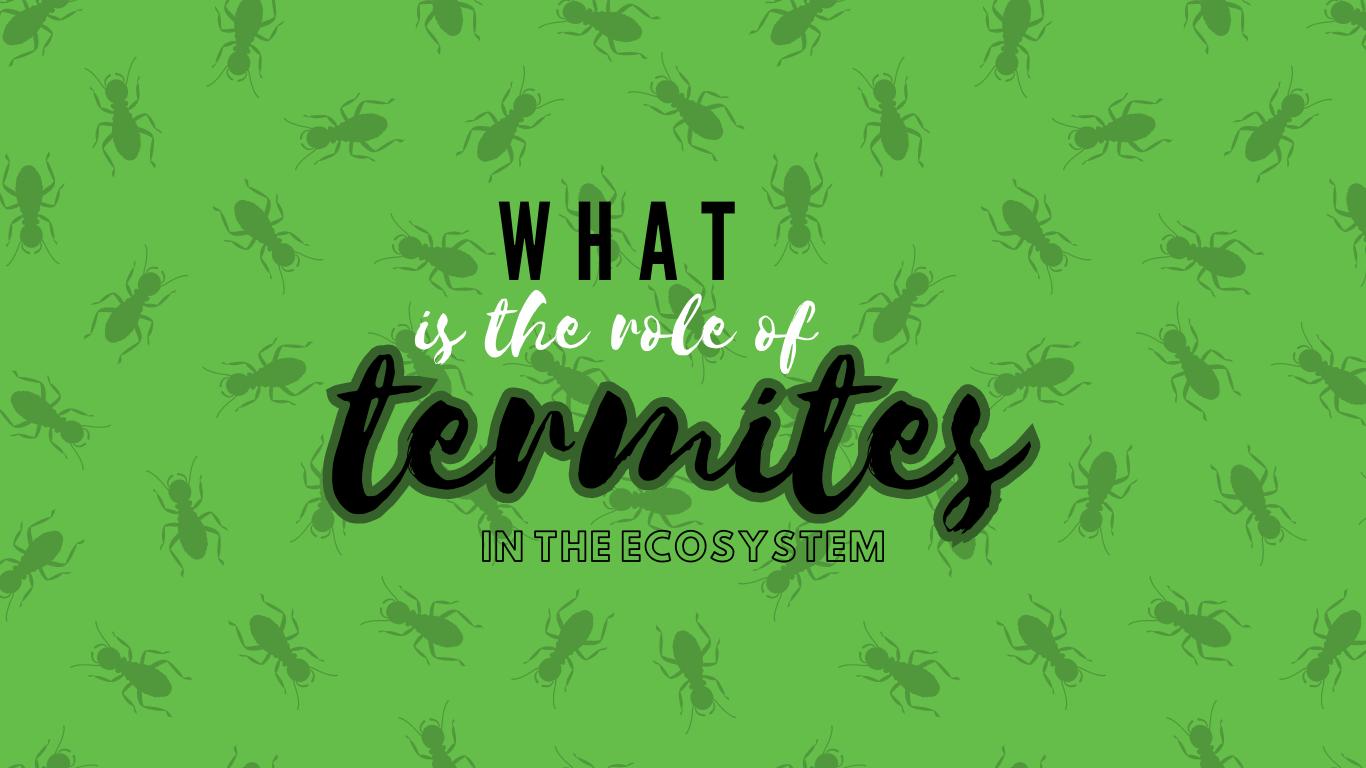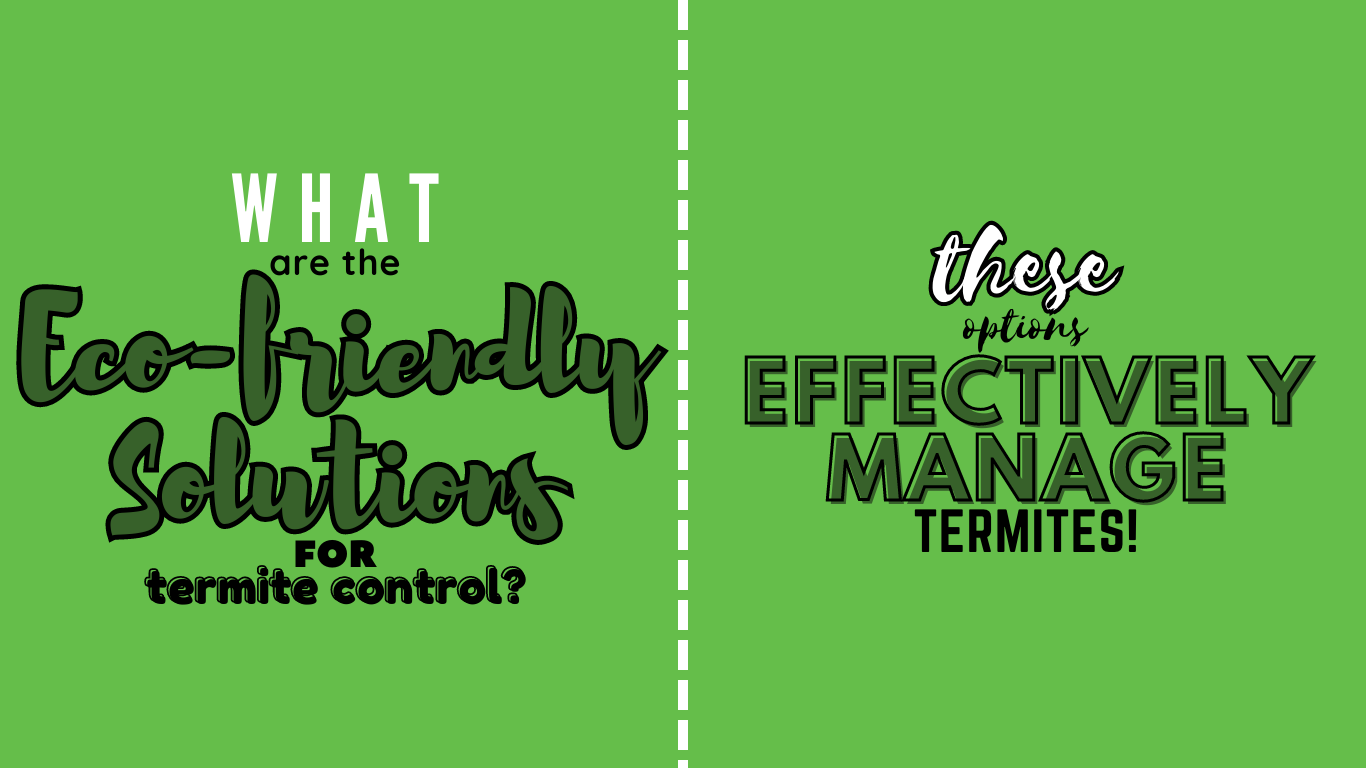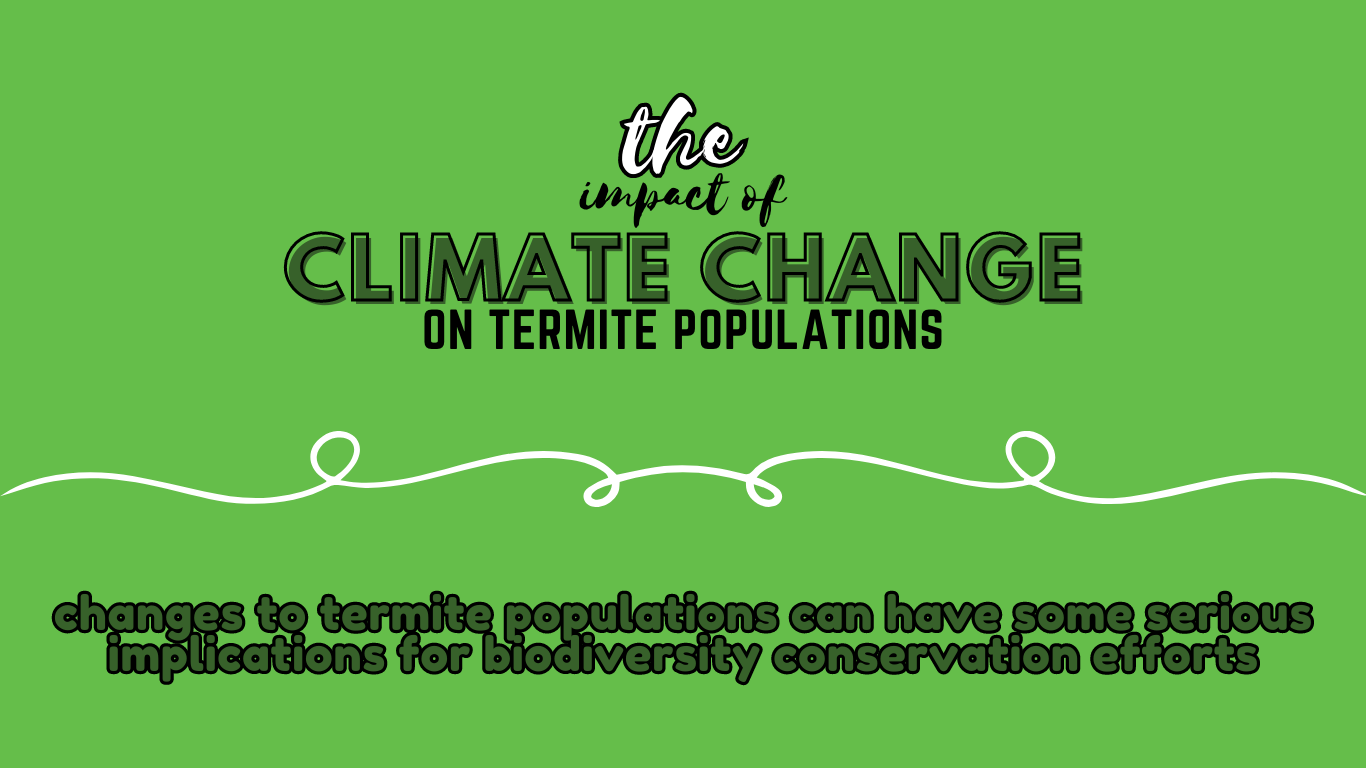
Environmental considerations in termite control have become increasingly important as we strive to balance effective pest management with the preservation of our ecosystem in Symrna, Tennessee.
Termites, despite their destructive reputation, play a crucial role in maintaining ecological equilibrium, particularly in modified tropical forests.
In this post, you’ll gain an understanding of termite behavior and its environmental tolerances as we discuss the environmental considerations in termite control.
We will delve into how termites contribute to the ecological balance and what makes them thrive or perish under varying conditions that termites experience.
Moreover, we will explore preventive measures against termite infestation that are both effective and have a low environmental impact.
This includes proper storage practices, which can significantly reduce your risk of infestation.
Further on, we discuss eco-friendly solutions for termite control, such as using borates and other botanical options available for sustainable pest management.
When severe infestations occur requiring professional intervention, it’s vital to choose green pest control services; we’ll guide you on when and how to do this effectively while considering environmental implications.
The final part of our discussion will examine the impact of climate change on termite populations—an essential factor given the termites’ ability to adapt rapidly within changing ecosystems.
Table Of Contents:
- The Role of Termites in the Ecosystem
- Preventive Measures Against Termite Infestation
- Eco-friendly Solutions for Termite Control
- Professional Intervention For Severe Infestations
- Impact of Climate Change on Termite Populations
- FAQs in Relation to Environmental Considerations in Termite Control
- What are termite environmental tolerances?
- What is the ability of termites to adapt to different environments?
- How do termite environmental tolerances affect termite control measures?
- What environmental factors can influence termite infestations?
- Are there environmentally friendly termite control methods available?
- How can environmental considerations contribute to long-term termite prevention?
- What role does professional expertise play in assessing termite environmental tolerances?
- Implementing environmentally conscious termite control strategies can help preserve the ecosystem while effectively managing termite infestations and protecting your property from damage.
The Role of Termites in the Ecosystem
Termites: tiny decomposers breaking down wood and creating fertile soil.
They’re like nature’s little composters.
Understanding Termite Behavior
Studies show termites can survive in different habitats.
They’re like the ultimate survivors, adapting to various temperatures and humidity levels.
They even infest modified tropical forests.
Termites may wreak havoc on our homes, but they’re just doing what they do best: finding cellulose-rich food sources.
They don’t discriminate between dead trees and our wooden structures. Ouch.
How Termites Contribute To Ecological Balance
Termites are the unsung heroes of decomposition.
They chew through decaying wood, then poop out nutrient-rich waste that enriches the soil.
They’re like little soil engineers, promoting healthy plant growth and better water retention.
These critters are vital for maintaining ecological balance, especially in tropical ecosystems with high biodiversity.
They’re like the clean-up crew, keeping everything in check.
Preventive Measures Against Termite Infestation
Termites are a homeowner’s worst nightmare.
These tiny creatures can cause significant damage to your home, especially if left unchecked.
Nevertheless, there are several strategies to help guard your residence against these destructive bugs without utilizing dangerous substances.
Effective ways to keep your home safe from termites
First, understand termite behavior. They love munching on wood and hanging out in damp places.
So, fix leaks and make sure your house doesn’t turn into a swimming pool.
- Maintain a dry environment: Check for water leaks and fix them as soon as possible. Also, make sure the ground slopes away from your house so it doesn’t become a termite water park.
- Avoid wood-to-ground contact: Keep wooden structures at least six inches above the ground. Termites can’t pole vault, so this will make it harder for them to get to your wood.
- Ventilation: Let the airflow. Good ventilation reduces humidity, making it less appealing for termites. Use exhaust fans in kitchens and bathrooms to keep things fresh.
- Treat Exposed Wood: Seal exposed wooden surfaces to protect them from moisture damage. Termites won’t be able to establish their fancy termite condos there.
- Schedule Inspections: Regular inspections are key. Catch those sneaky termites early on before they turn your home into their personal playground.
The Importance of proper storage practices
Don’t forget about the stuff you keep outside. Proper storage practices can help keep termites away:
- Pile firewood away from the house: If you have firewood, keep it far away from your home. Termites love cozying up to the wood, so don’t give them a free pass to your place.
- Avoid clutter: Cleanliness is key. Cluttered spaces are like luxury resorts for pests. Keep things tidy and dispose of unnecessary items to avoid giving termites a five-star hideout.
Remember, chemical treatments may offer quick fixes, but they come with their own set of environmental concerns.
Opting for eco-friendly alternatives is not only effective but also better for the planet.
So, let’s keep those termites at bay and create a safer, healthier home for everyone.
Preventive measures against termite infestation include fixing leaks and maintaining a dry environment, avoiding wood-to-ground contact, and ensuring good ventilation. Proper storage practices such as keeping firewood away from the house and avoiding clutter can also help keep termites at bay. Opting for eco-friendly alternatives to chemical treatments is not only effective but also better for the environment.
Eco-friendly Solutions for Termite Control
Don’t bug out. Traditional methods can harm the environment but fear not.
Eco-friendly solutions are here to save the day.
These options effectively manage termites without wreaking havoc on the ecosystem.
Using Borates for Effective Yet Environmentally Friendly Termite Control
Borates are the bee’s knees when it comes to termite control.
Derived from boric acid, they’re low in toxicity but high in effectiveness.
Termites chow down on borates, and it’s game over for them.
The best part: no harm done to other critters or your loved ones.
Curious about how borates work their magic?
They infiltrate infested areas, like wood or soil, messing with termite metabolism.
This leaves the little buggers malnourished and unable to survive.
Slow and steady wins the termite race.
Other Botanical Options Available For Sustainable Pest Management
Are Borates not your cup of tea? No worries.
There are other eco-friendly options to keep those termites in check:
- Diatomaceous Earth: This stuff is fossilized gold. It dehydrates termites by penetrating their exoskeletons. Say goodbye to those thirsty pests.
- Nematodes: These microscopic worms are nature’s pest control squad. They feast on termite larvae, keeping their numbers in check. No chemicals are needed.
- Cedar Oil: Termites hate the smell of cedar oil. Confusing and disorienting their communication, cedar oil disrupts the termites’ signals in a baffling way. Talk about a termite mind-boggler.
These alternatives aren’t just termite terminators, they’re eco-friendly superheroes.
Unlike synthetic pesticides, they don’t harm beneficial species.
It’s all about maintaining that delicate ecological balance, folks.
Professional Intervention For Severe Infestations
If you’ve done everything, but the termites are still throwing a party in your home, it’s time to call in the pros.
Eco-friendly solutions are great for small problems, but when termites bring their whole extended family, you need advanced intervention.
Especially if you’re dealing with a termite family reunion of different species, each with its own quirks and habits.
When to call for backup?
As soon as you hear hollow wood, see mud tubes on your walls, or find discarded wings by your windows and doors, it’s time to bring in the big guns.
Don’t wait around because these pests will keep chomping away at your home, causing more damage than a bull in a china shop.
And if your neighbors are also fighting the termite invasion or if there’s been a sudden surge in termite activity in your area, it’s a good idea to get your property inspected by professionals.
They know their termites like the back of their hand and can tell you exactly which ones are crashing your party.
Choosing an eco-friendly pest control
At Mean Green Pest Pros, we’re all about saving the planet while kicking termites to the curb.
Our commercial and residential treatments use environmentally friendly products like borates instead of nasty chemical insecticides.
We’re like the superheroes of pest control, fighting the bad guys without harming the innocent.
We boast a remarkable record of successful pest removal, rarely requiring additional visits.
That means we get the job done right the first time, saving you from unnecessary follow-up visits and reducing our carbon footprint.
We’re all about efficiency, baby.
- Eco-Friendly: We use organic ingredients that are tough on pests but gentle on the environment. No collateral damage here.
- Certified Professionals: Our team of certified technicians is always up-to-date with the latest pest control advancements. They’re like the Einstein of bug busters.
- No Call Back Rate: We’re so good at what we do that we rarely need to come back for seconds. That means less time, less money, and fewer carbon emissions. Win-win-win.
So don’t wait until your home becomes a termite buffet.
Contact us today and let us help you maintain a safe and healthy living space free from unwanted guests.
When dealing with severe termite infestations, it’s important to call in professional help. Eco-friendly pest control companies like Mean Green Pest Pros use organic ingredients and have a low call-back rate, ensuring effective treatment without harming the environment or requiring multiple visits.
Impact of Climate Change on Termite Populations
The consequences of climate change are vast, and its effects can be seen in almost every environment – including the populations of small insects such as termites.
One area that often gets overlooked is the impact on insect populations, like those pesky termites.
These little critters play a vital role in ecosystems, especially in old-growth tropical forests.
So, changes to termite populations can have some serious implications for biodiversity conservation efforts.
Effects of Increased Temperatures and Reduced Humidity Levels
Rising temperatures due to global warming lead to reduced humidity levels, which really cramp the style of termites.
It messes with their nesting strategies and makes it harder for them to resist drying out.
In fact, research predicts that higher temperatures would be a real buzzkill for termite survival rates.
A study by the University of Sydney found that hard-bodied termites can handle the heat better than their soft-bodied buddies.
Turns out, having a tough exoskeleton helps them tolerate dry conditions. Who knew being tough could be so handy?
Nest Type: A Significant Factor Influencing Survival Rates
Termites build different types of nests depending on their species and the environment.
Some build mounds above ground, while others prefer to burrow into the soil or wood structures.
According to entomologists, this diversity in nesting habits might give some termite species an edge in adapting to climate change.
It’s like having a variety of housing options to choose from.
Humidity’s Role in Dictating Distribution Patterns
It seems that humidity plays a bigger role in termite distribution than we thought.
Research published in the Journal of Experimental Biology suggests that maintaining suitable microclimatic conditions is crucial for healthy termite communities.
So, let’s keep those termites feeling comfortable and cozy.
Mitigating Impacts through Sustainable Pest Management Practices
- Eco-friendly pest control: Say goodbye to harmful chemicals and hello to eco-friendly pest management practices. Companies like Mean Green Pest Pros can help protect your home from termites while keeping the environment happy.
- Sustainable landscaping: Let’s give termites a natural habitat to hang out in. Incorporating sustainable landscaping techniques in your property design can support diverse wildlife and contribute to overall ecosystem health.
- Biodiversity Conservation Efforts: Spread the word about the importance of preserving biodiversity. Participate in neighborhood efforts that strive to safeguard local plant and animal life. Together, we can help maintain balanced ecosystems that can adapt to the challenges of climate change.
Climate change has a significant impact on termite populations, affecting their survival rates and nesting strategies. Humidity plays a crucial role in termite distribution, highlighting the importance of maintaining suitable microclimatic conditions. Eco-friendly pest control practices and sustainable landscaping can help mitigate these impacts while promoting biodiversity conservation efforts.
FAQs in Relation to Environmental Considerations in Termite Control
What are termite environmental tolerances?
Termite environmental tolerances refer to the conditions in which termites can survive and thrive, including factors such as temperature, humidity, and food sources.
What is the ability of termites to adapt to different environments?
Termites have a remarkable ability to adapt to various environmental conditions, allowing them to establish colonies and cause damage in diverse settings.
How do termite environmental tolerances affect termite control measures?
Understanding termite environmental tolerances is crucial for implementing effective termite control strategies that target their preferred habitats and exploit their vulnerabilities.
What environmental factors can influence termite infestations?
Factors such as moisture levels, soil type, vegetation, and proximity to food sources can significantly impact the likelihood and severity of termite infestations.
Are there environmentally friendly termite control methods available?
Yes, there are environmentally friendly termite control methods that minimize the use of harsh chemicals and focus on integrated pest management approaches, such as baiting systems and physical barriers.
How can environmental considerations contribute to long-term termite prevention?
By addressing environmental factors conducive to termite infestations, such as reducing moisture sources and eliminating wood-to-soil contact, long-term termite prevention can be achieved while minimizing the need for chemical treatments.
What role does professional expertise play in assessing termite environmental tolerances?
Professional termite control experts possess the knowledge and experience to evaluate environmental factors and tailor effective treatment plans that consider both the termites’ preferences and the overall environmental impact.
Implementing environmentally conscious termite control strategies can help preserve the ecosystem while effectively managing termite infestations and protecting your property from damage.
The environmental considerations in termite control have been revealed!
In conclusion, understanding the role of termites in the ecosystem is crucial when considering environmental considerations in termite control.
By implementing preventive measures such as proper storage practices and using eco-friendly solutions like borates and botanical options, we can effectively manage termite infestations while minimizing harm to the environment.
However, for severe infestations, it is advisable to seek professional help from green pest control services that prioritize sustainable practices.
With climate change impacting termite populations, it becomes even more important to adopt environmentally friendly approaches for long-term termite control.
Contact Mean Green Pest Pros today to schedule an appointment!









